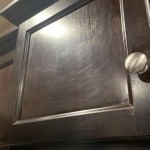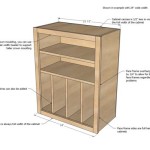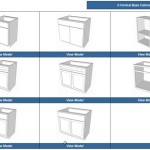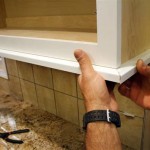Lazy Susan Hardware For Kitchen Cabinets
Lazy Susan hardware is an essential component for maximizing the functionality and accessibility of corner cabinets, particularly in kitchens. These rotating shelves offer a practical solution for storing and retrieving items that would otherwise be difficult to reach in the depths of a cabinet. Understanding the different types of Lazy Susan hardware available, their installation requirements, and their maintenance can significantly improve kitchen organization and efficiency.
The term "Lazy Susan" refers to a rotating tray or platform, typically circular, used for serving food or displaying items. In the context of kitchen cabinets, the Lazy Susan is a rotating shelving system installed inside a cabinet, allowing easy access to items stored within. This design is especially beneficial for corner cabinets, which often have awkward and hard-to-reach spaces.
The effectiveness of a Lazy Susan hinges on the quality and type of hardware used. The hardware provides the structural support and rotating mechanism, enabling the smooth and reliable operation of the shelving system. Selecting the appropriate hardware is crucial for the longevity and functionality of the Lazy Susan.
Types of Lazy Susan Hardware
Lazy Susan hardware is available in various configurations, each designed to accommodate different cabinet styles, space constraints, and storage needs. Common types include full-circle units, pie-cut units, and kidney-shaped units. The choice of hardware will depend largely on the cabinet shape and the desired accessibility.
Full-Circle Lazy Susans: This type features a completely circular shelf that rotates within the cabinet. Full-circle Lazy Susans are suitable for square or rectangular corner cabinets where there is ample space for the entire circle to rotate freely. They offer maximum storage capacity and accessibility, as every item on the shelf can be brought to the front with a simple rotation. The hardware typically consists of a central pole or bearing system and mounting brackets to secure the shelves. The rotating mechanism allows the entire unit to spin smoothly and evenly.
Pie-Cut Lazy Susans: These units are designed for corner cabinets with a 90-degree angle. The shelves are shaped like a quarter of a circle, resembling a pie slice. When two pie-cut shelves are installed in a corner cabinet, they create a full circle when rotated. Pie-cut Lazy Susans are a popular choice for standard corner cabinets because they offer a good balance of storage capacity and accessibility. The hardware for pie-cut Lazy Susans typically includes a central rotating mechanism and brackets to attach the shelves to the cabinet walls and door. The door often rotates with the shelf, providing full access to the contents.
Kidney-Shaped Lazy Susans: These units feature shelves shaped like a kidney bean. They are designed to avoid obstructions within the cabinet, such as plumbing or structural elements. Kidney-shaped Lazy Susans are particularly useful in situations where a full-circle or pie-cut shelf would not fit properly. The kidney shape allows for efficient use of space while accommodating potential obstacles. The hardware includes a rotating mechanism and mounting brackets. While they might not offer as much storage as full-circle units, they provide a practical solution for challenging cabinet configurations.
Beyond the shape, Lazy Susan hardware also varies in terms of materials and construction. Common materials include metal, plastic, and wood. Metal hardware, such as steel or aluminum, is generally more durable and can support heavier loads. Plastic hardware is lightweight and resistant to moisture, making it suitable for environments where spills are common. Wooden Lazy Susans can offer an aesthetic appeal that complements the cabinet's design.
Installation Considerations for Lazy Susan Hardware
Proper installation of Lazy Susan hardware is crucial for ensuring its smooth operation and longevity. Incorrect installation can lead to instability, uneven rotation, and potential damage to the cabinet or hardware. Careful planning and precise execution are essential for a successful installation.
Measuring and Planning: Before installing a Lazy Susan, it is important to accurately measure the interior dimensions of the cabinet. This includes the height, width, and depth, as well as the diameter of the opening. The measurements will determine the appropriate size and type of Lazy Susan hardware to purchase. It is also important to consider any obstructions within the cabinet, such as plumbing or electrical wiring. A detailed plan should be created, outlining the placement of the hardware and shelves.
Preparing the Cabinet: The cabinet interior should be clean and free of debris before installation. Any existing shelves or hardware should be removed, and the cabinet surfaces should be smooth and level. If necessary, the cabinet walls may need to be reinforced to provide adequate support for the Lazy Susan hardware. This can be done by adding plywood or other structural materials to the cabinet walls.
Installing the Hardware: The installation process will vary depending on the type of Lazy Susan hardware being used. Generally, the hardware will include a central pole or bearing system that is attached to the cabinet floor and ceiling. The shelves are then attached to this central support, allowing them to rotate freely. It is important to follow the manufacturer's instructions carefully and use the appropriate screws and fasteners. The hardware should be securely mounted to the cabinet to prevent wobbling or instability.
Adjusting and Testing: Once the Lazy Susan hardware is installed, it is important to adjust and test the unit to ensure it rotates smoothly and evenly. The shelves should be level and properly aligned. Any necessary adjustments should be made to ensure the Lazy Susan operates properly. It is also important to test the weight capacity of the shelves to ensure they can support the intended load. Overloading the shelves can damage the hardware and reduce its lifespan.
Professional installation is recommended for individuals who are not experienced with cabinet hardware installation. A professional installer will have the necessary tools and expertise to ensure the Lazy Susan is properly installed and functions correctly. This can save time and prevent potential problems down the road.
Maintenance and Care of Lazy Susan Hardware
Regular maintenance and care are essential for prolonging the life of Lazy Susan hardware and ensuring its continued smooth operation. Proper maintenance can prevent issues such as squeaking, sticking, or instability. Simple steps can be taken to keep the Lazy Susan in optimal condition.
Cleaning: The shelves and hardware should be cleaned regularly to remove dust, dirt, and spills. A damp cloth or sponge can be used to wipe down the surfaces. Harsh cleaning chemicals should be avoided, as they can damage the hardware or shelves. For wooden Lazy Susans, a wood cleaner or polish can be used to maintain the finish. Spills should be cleaned up promptly to prevent staining or damage.
Lubrication: The rotating mechanism of the Lazy Susan should be lubricated periodically to ensure smooth operation. A silicone-based lubricant is recommended, as it will not attract dust or dirt. The lubricant should be applied sparingly to the moving parts of the hardware. Avoid using oil-based lubricants, as they can become sticky and attract debris over time. Regular lubrication will prevent squeaking and ensure the Lazy Susan rotates freely.
Inspection: The Lazy Susan hardware should be inspected regularly for any signs of wear or damage. Check for loose screws, cracked shelves, or damaged rotating mechanisms. Any necessary repairs should be made promptly to prevent further damage. Loose screws should be tightened, and damaged shelves should be replaced. If the rotating mechanism is damaged, it may need to be replaced entirely.
Weight Management: Avoid overloading the Lazy Susan shelves, as this can strain the hardware and reduce its lifespan. Distribute the weight evenly across the shelves to prevent uneven wear. Heavy items should be placed on the lower shelves, while lighter items can be placed on the upper shelves. Overloading the shelves can cause the Lazy Susan to wobble or become unstable. Following the manufacturer's weight recommendations is essential.
By following these maintenance and care tips, it is possible to extend the life of Lazy Susan hardware and ensure its continued smooth operation. Regular cleaning, lubrication, inspection, and weight management will help prevent problems and keep the Lazy Susan functioning optimally for years to come. When properly maintained, Lazy Susan hardware offers a durable and efficient solution for kitchen organization and accessibility.
Ultimately, the selection, installation, and maintenance of Lazy Susan hardware are integral to optimizing kitchen space and functionality. By carefully considering the types of hardware available, understanding the installation requirements, and implementing regular maintenance practices, homeowners can enjoy the benefits of a well-organized and easily accessible kitchen.

What Did Lazy Susan Ever Do To Anyone Handles More

Hardware Resources 24 Inch Diameter Kidney Plastic Lazy Susan Set With Chrome Hubs White Plsmk24 Cabinetparts Com

Super Susan 90 Corner Cabinet Lazy Chrome 31 1 2 In Handles More

Lazy Susan Hinges Complete Hardware Package Face Frame Cabinet

Thomasville Organization Lazy Susan Pullout

What Are Lazy Susan Cabinets Redo

Pin On Hardware

What Did Lazy Susan Ever Do To Anyone Handles More

Diamond At Organization Base Lazy Susan Pull Out

Lazy Susan Knobs Or Not
Related Posts








